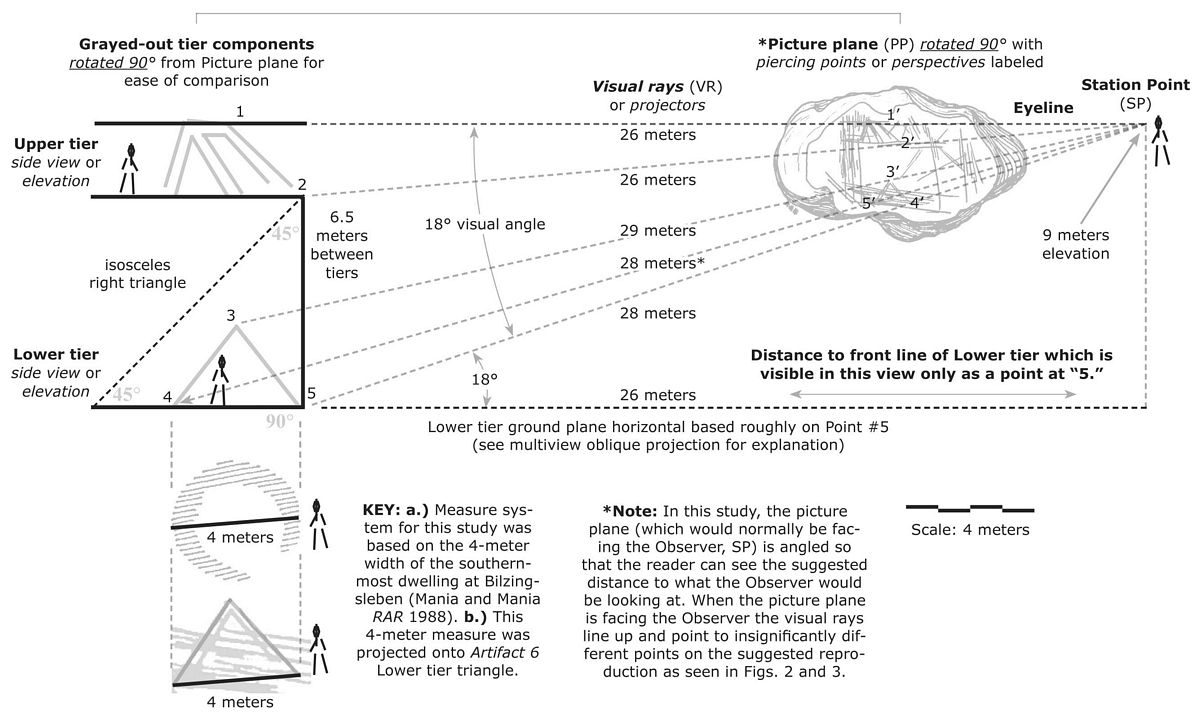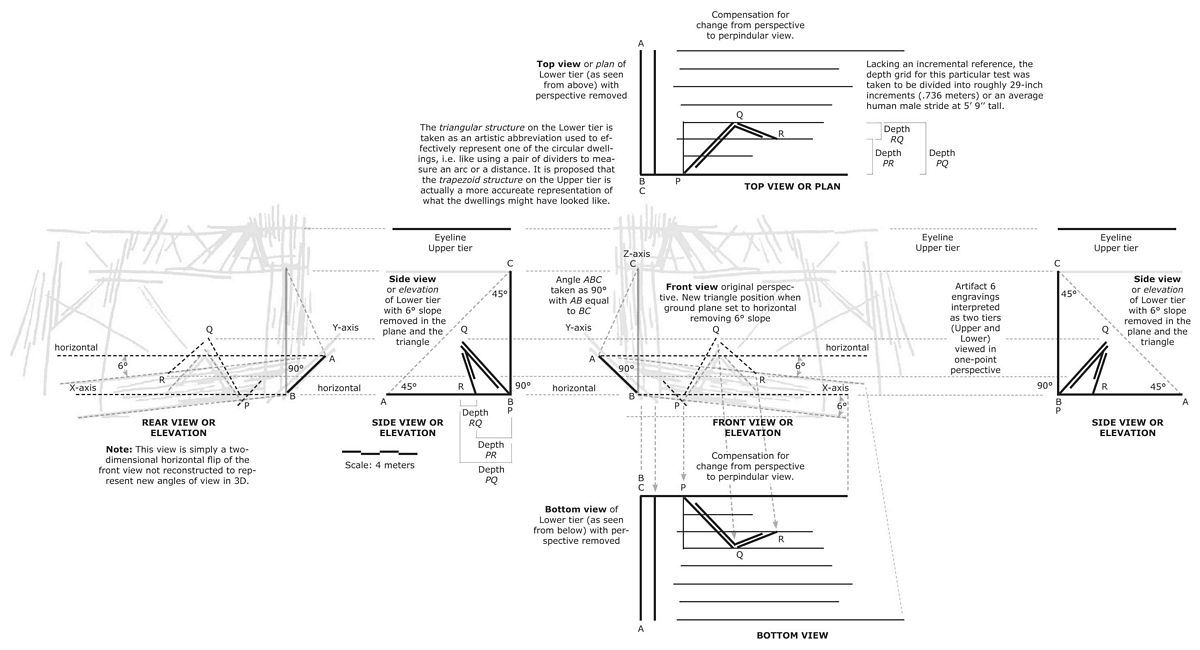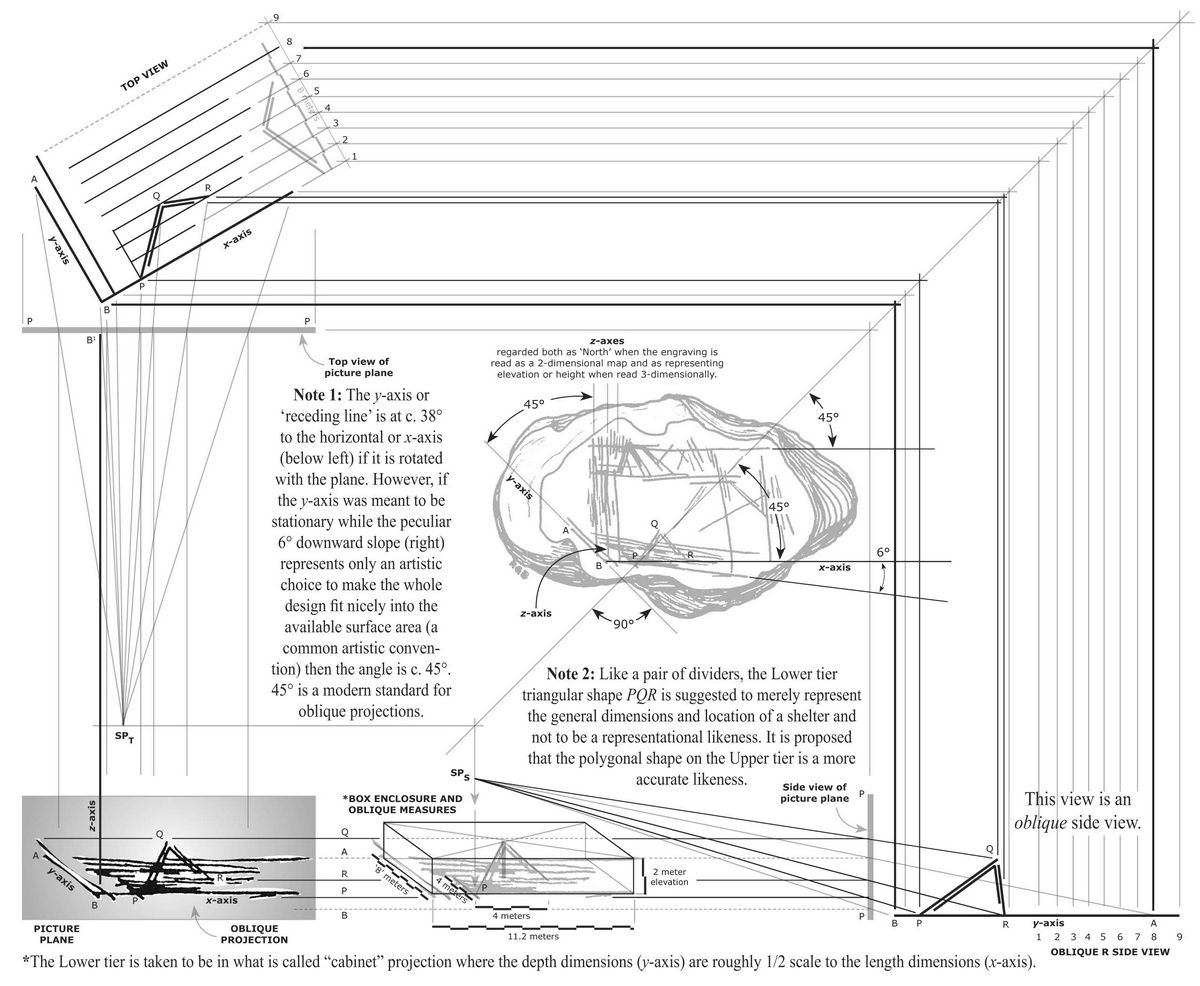Continuing from Part 8 which was titled Evidence for a Homo erectus campsite depiction in 3D
Many of the studies made of the 320,000–412,000-year old bone engravings from Bilzingsleben in central Germany which were done for the XV UISPP Congress in Lisbon 2006 had inadvertently developed into poster-sized studies.
Fig. 1. Proposed geographic projection of Artifact 6 as layout of the Lower Paleolithic campsite at Bilzingsleben suggested to be a representation of the site created by an extremely-skilled artist who was actually there 350,000-years ago. Note: The isosceles triangle connecting the two tiers (left) is based on suggestion that the original oblique projection in the artifact (right) was done using a technique similar to that known as cabinet-style where the depth measures or increments are depicted at 1/2 ratio to that of the height or width measures. J. Feliks 2006-2012. Not-to-scale persons were inserted to give sense of space. Drawing of the artifact by Robert Bednarik; used w/permission. Circular dwelling in the Key isolated from 1988 archaeological site map by Dietrich and Ursula Mania to show source of measure; used w/permission.Only shortly before the Congress did the author realize that such studies would not translate well as quickly-projected slides. So, most of the ideas were converted over or broken up into snappier images for the two 56–slide programs, The Graphics of Bilzingsleben, and Phi in the Acheulian.
Unfortunately, as it turns out even now, large and complicated studies don’t reproduce well in something like the PCN newsletter either even though the reader does have the option when viewing on a computer to enlarge them. So, the studies offered here (Figs. 1-3) are enlarged as best they could be to fit into these few pages.
Please
note that explanations, clarifications, disclaimers, etc., of all the
details could go on and on (as with many similar
systematically-produced studies) but when dealing with a community
which is blinkered by Darwinism the author believes that it doesn’t
matter what evidence is presented or how many details are clarified,
adherents to evolutionary thinking including evolution by natural selection and its accompanying evolution of cognition would
rather continue believing in the paradigm than to conceive of the
possibility that a deception so massive could have been held up as
science for 150 years. The main hope here is that the reader—technical
specialist or otherwise—will look past the temptation to seek out
errors of minutiae
cont. on p. 11


